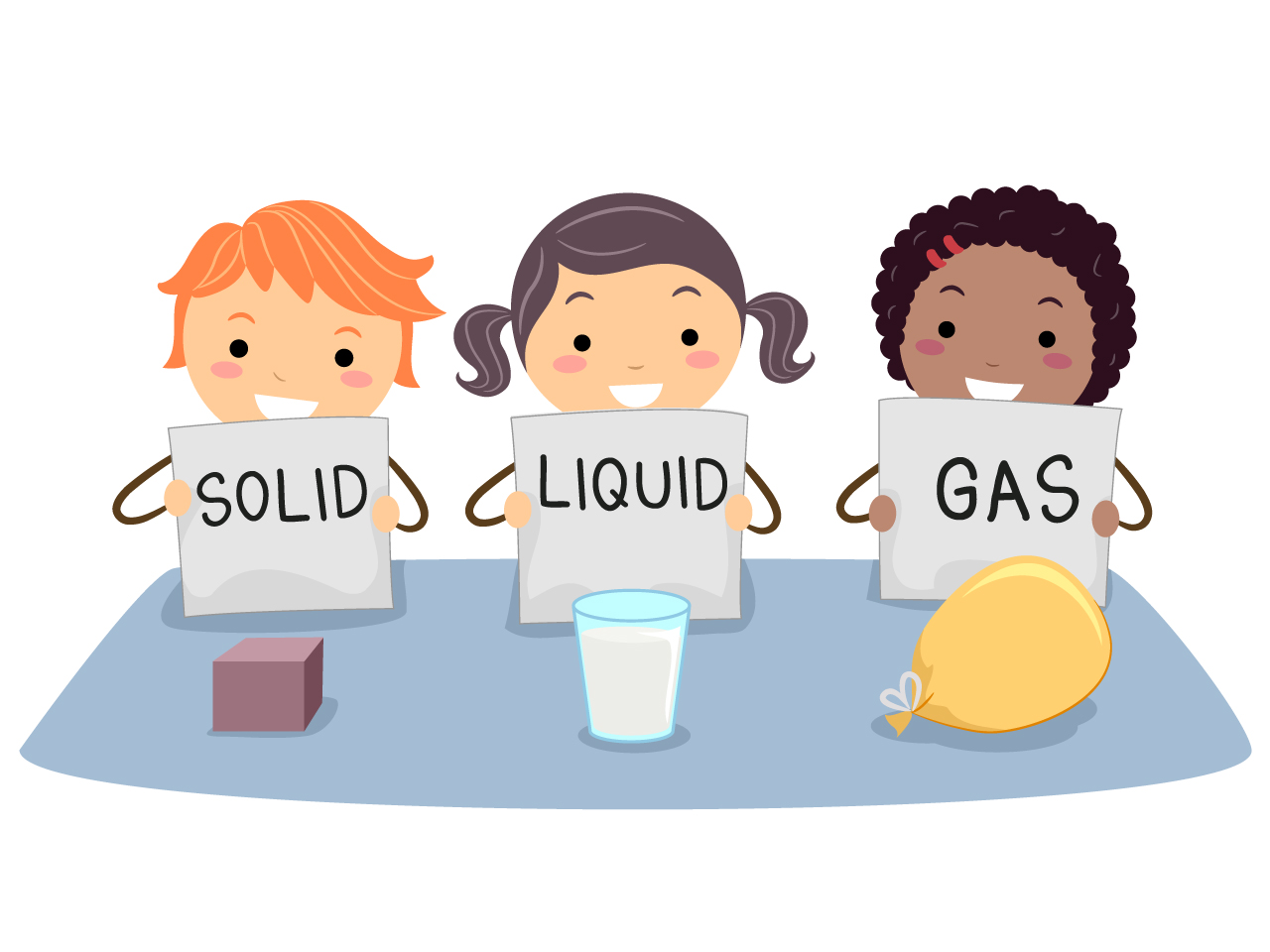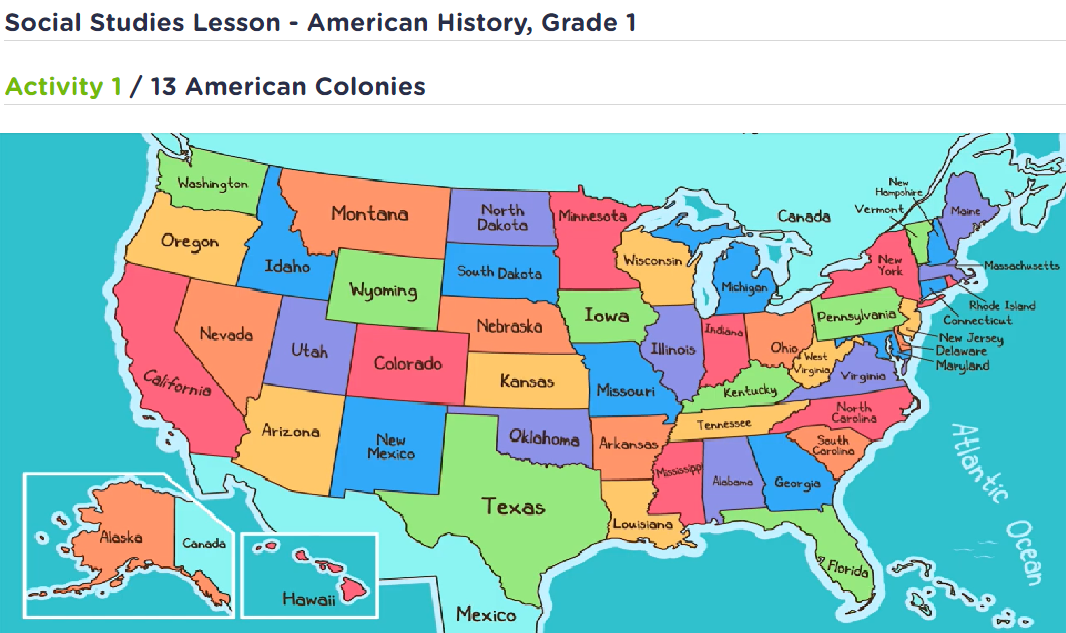Normal Songs and Poems Worksheets Activities With Answers for Ages 3-9
11 filtered results
-
From - To
Discover our engaging “Normal Songs and Poems Worksheets” designed specifically for children ages 3 to 9! These printable activities include a variety of fun songs and enchanting poems that promote early literacy and language skills. Each worksheet comes with an answer key, making it easy for educators and parents to assess understanding and track progress. Foster a love for learning through rhythmic melodies and imaginative verses, while enhancing vocabulary and comprehension. Perfect for classroom settings or home learning, these activities provide hours of creative exploration and joyful expression. Dive into the world of music and poetry today!
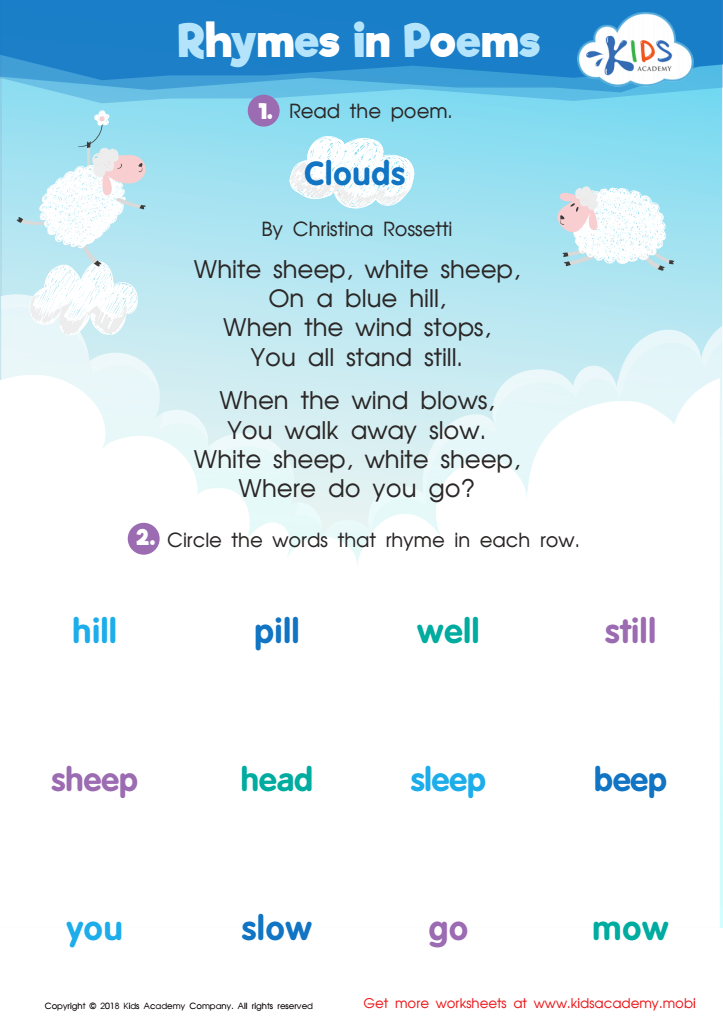

Rhymes in Poems Worksheet
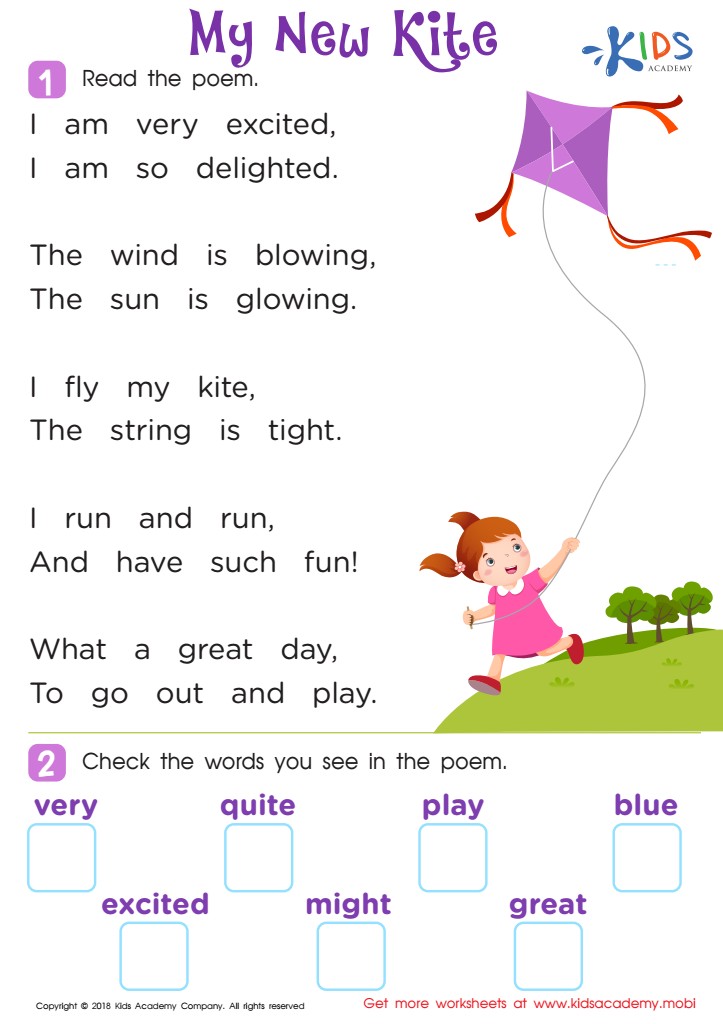

Poem: My New Kite Worksheet
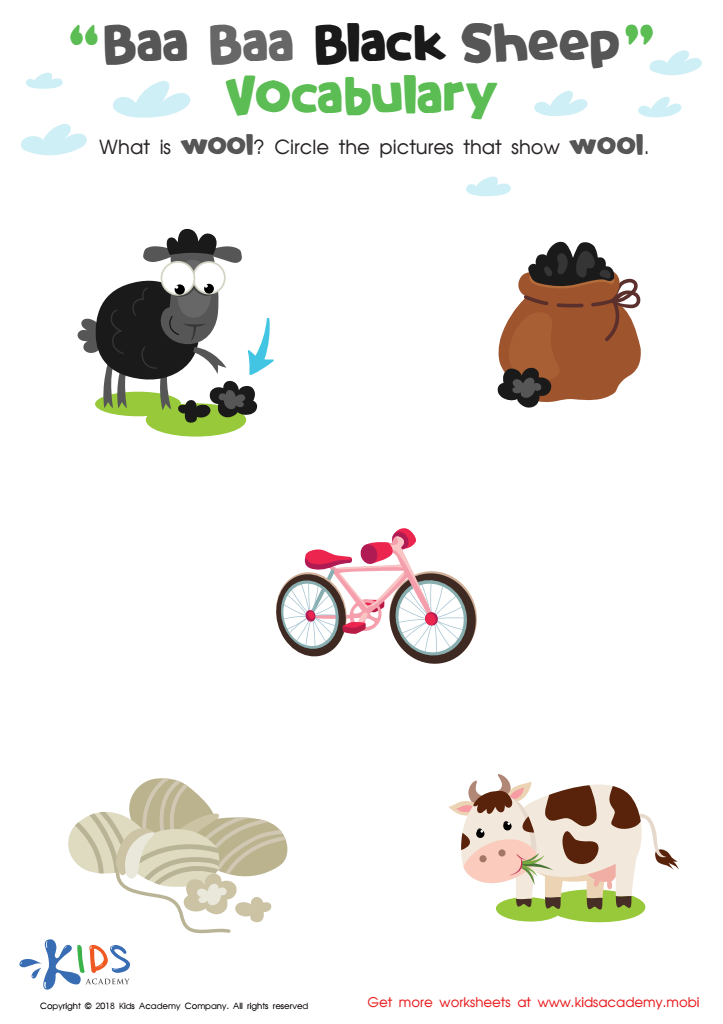

Baa Baa Black Sheep: Vocabulary Worksheet
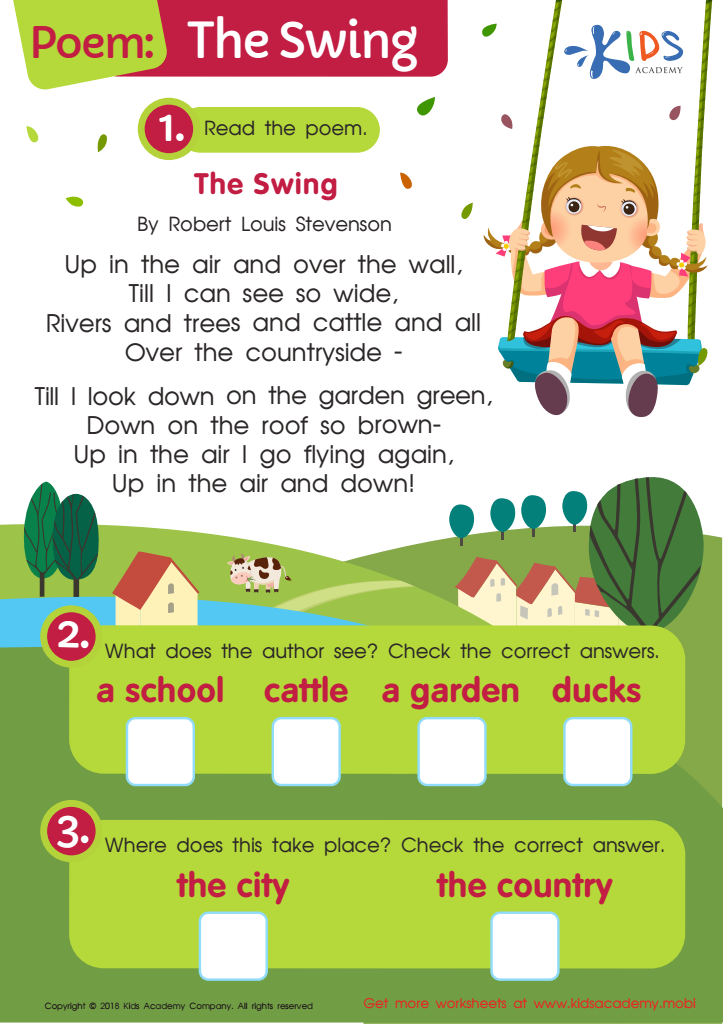

Poem: The Swing Worksheet
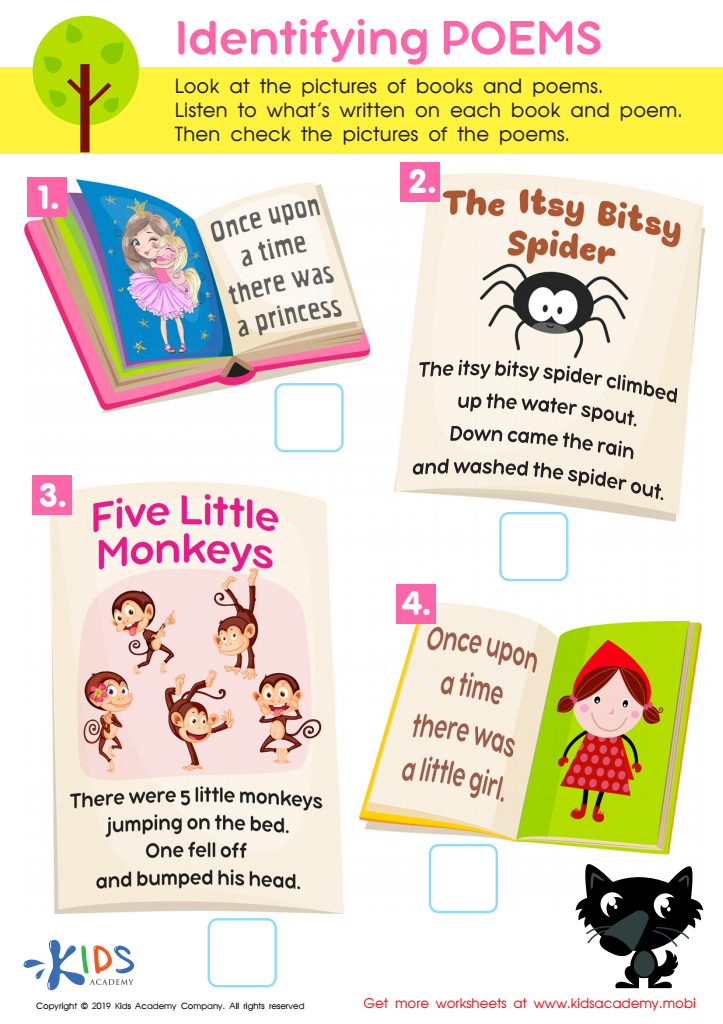

Identifying Poems Worksheet
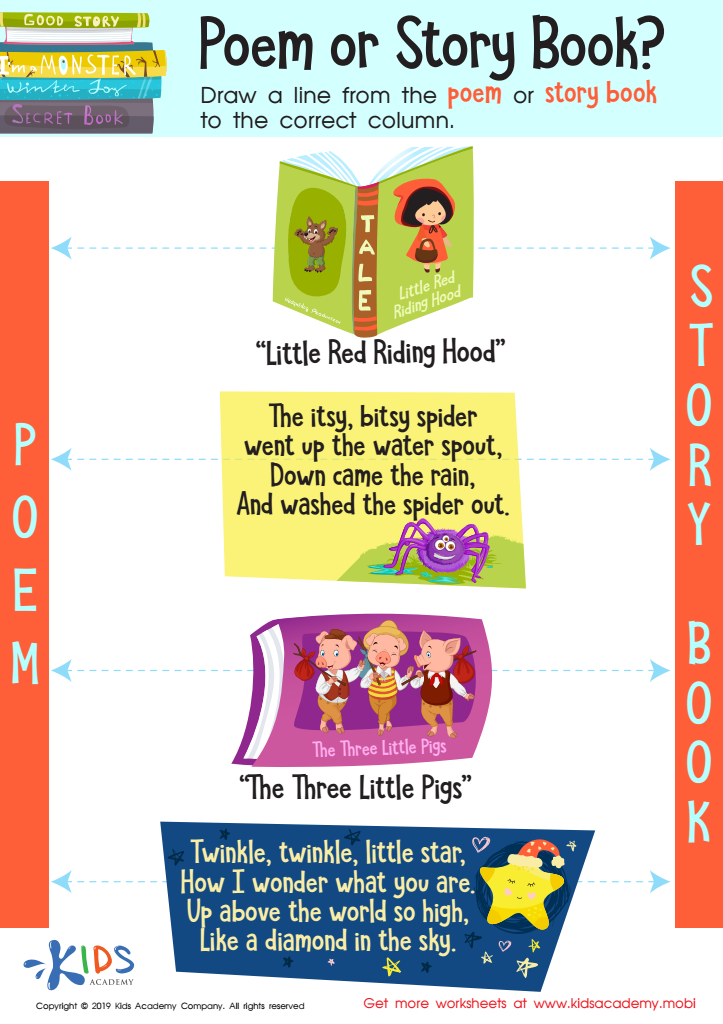

Poem or Story Book? Worksheet
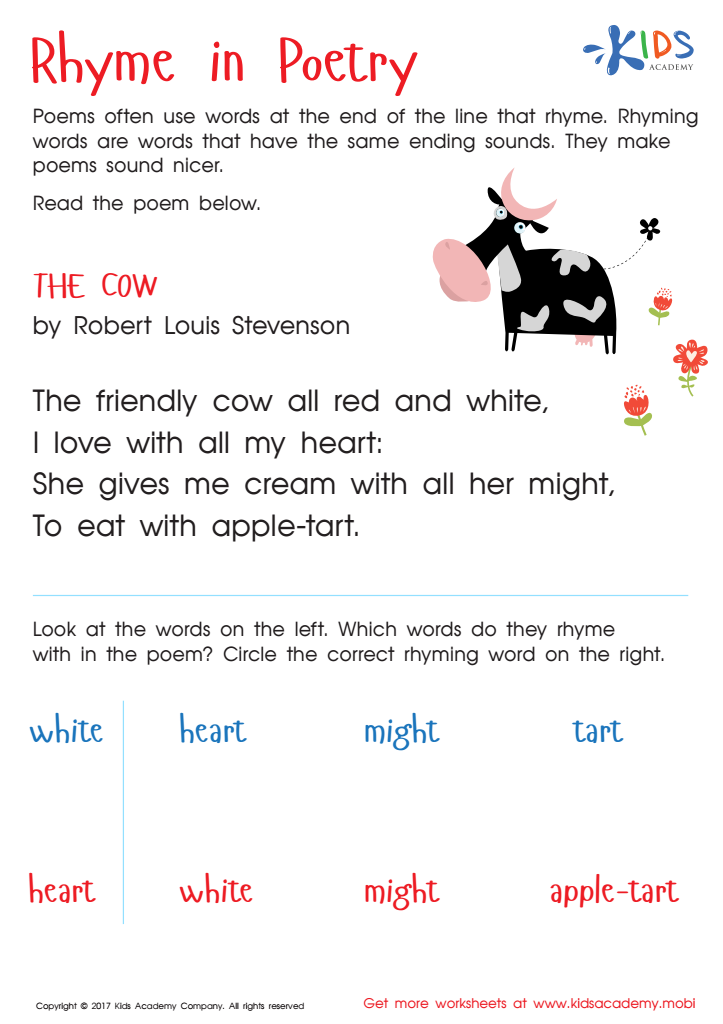

Rhyme In Poetry Worksheet
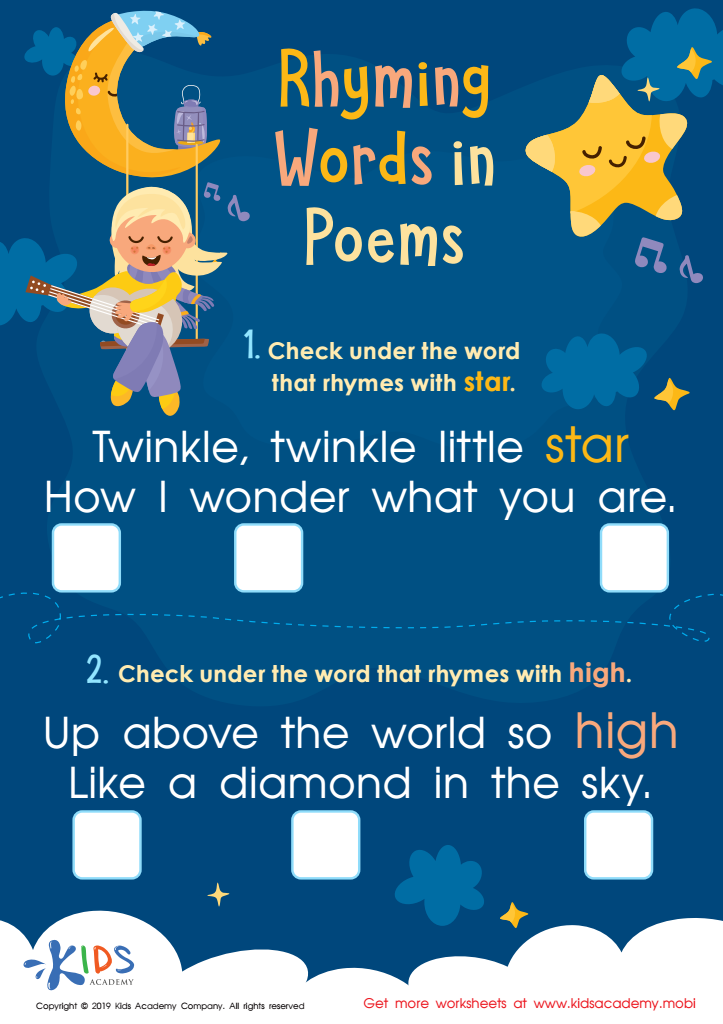

Rhyming Words in Poems Worksheet
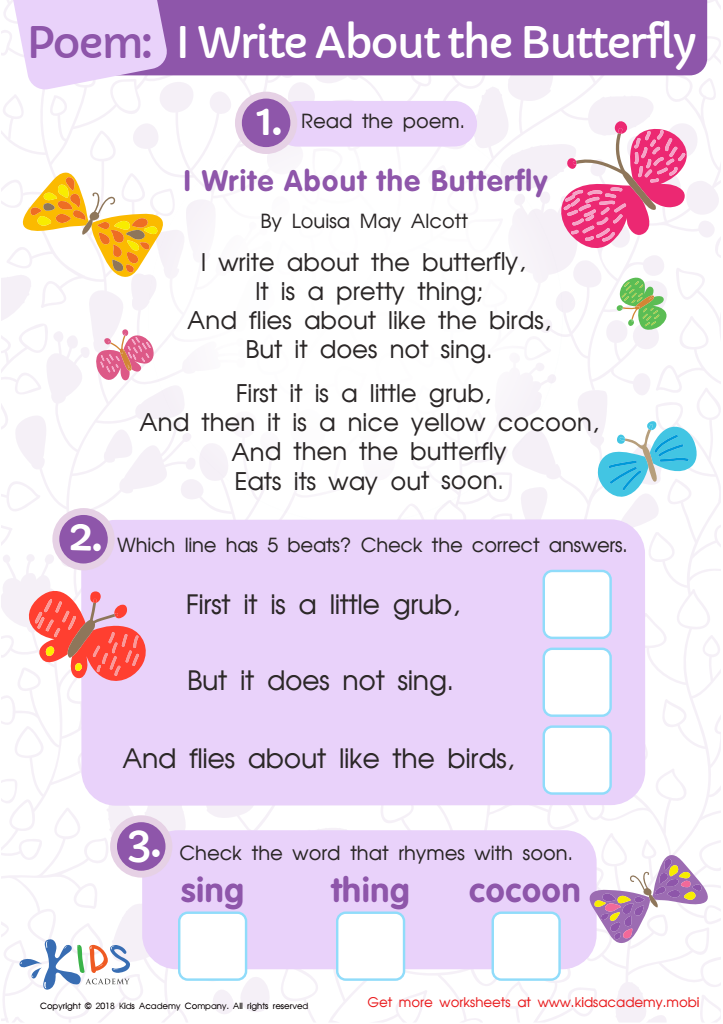

Poem: I Write About The Butterfly Worksheet
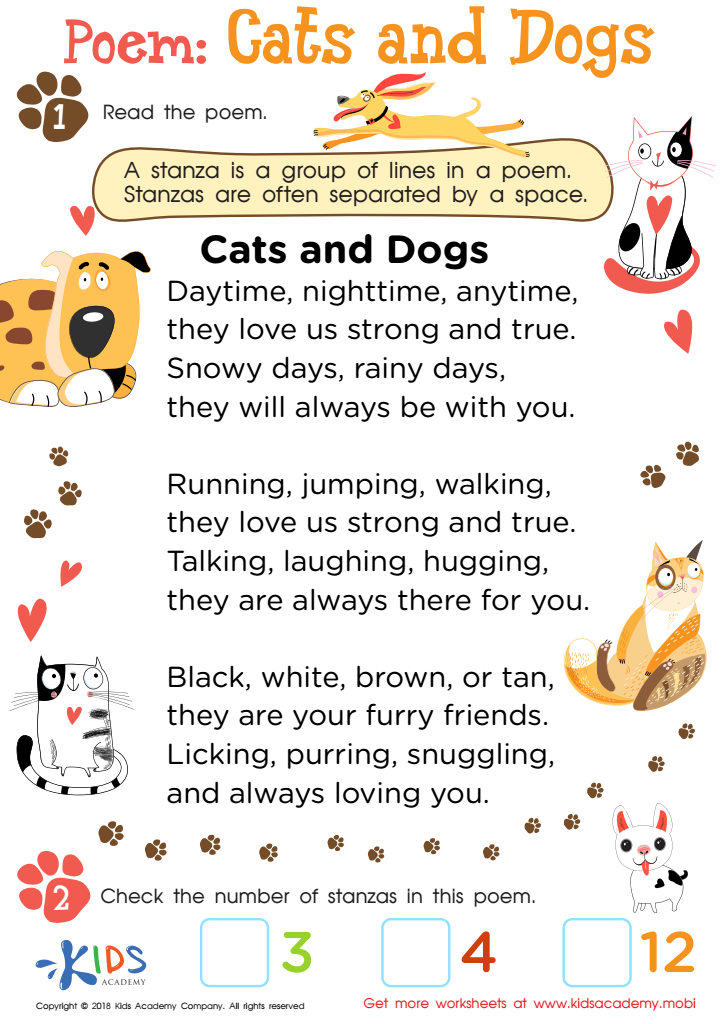

Poem: Cats and Dogs Worksheet
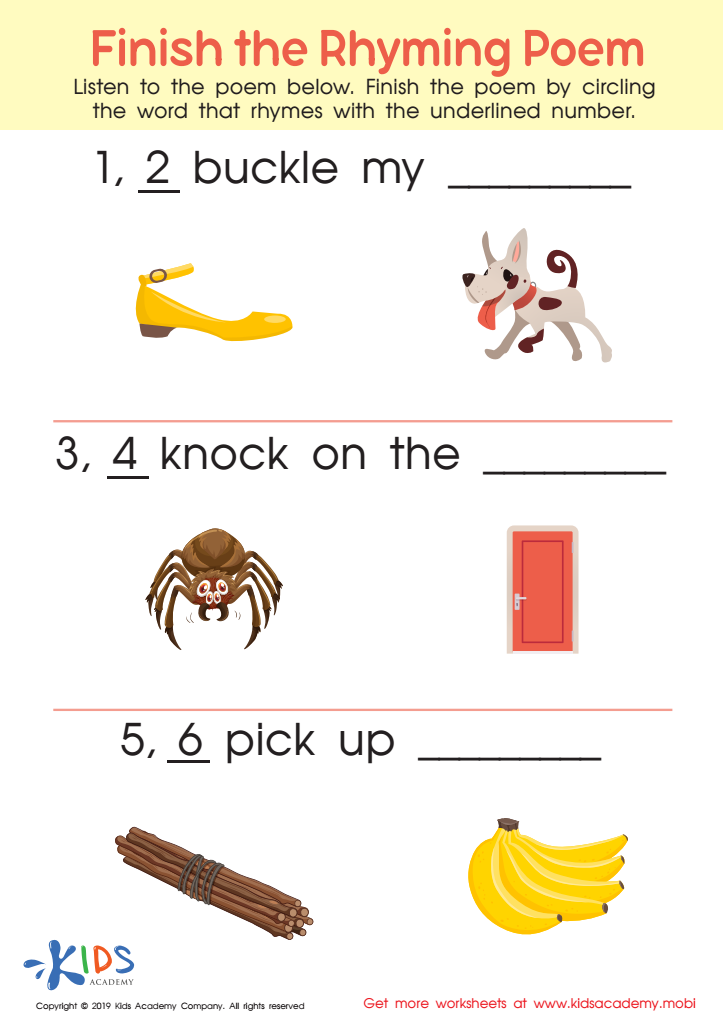

Finish Rhyming Poem Worksheet
Normal Songs and Poems Activities provide a vital foundation for early childhood development. For parents and teachers, these activities are more than just fun; they serve multiple educational purposes. First, engaging with songs and poems enhances language skills. They introduce children to new vocabulary, phonemic awareness, and rhythmic patterns that are essential for reading readiness. Singing and reciting lyrics also improve memory and retention, laying the groundwork for literacy.
Moreover, these activities promote social-emotional learning. They often incorporate themes of friendship, sharing, and feelings, which help young children navigate their emotions and build connections with peers. Songs and poems often invite active participation, fostering cooperation and interaction, which are critical during these formative years.
Additionally, music and rhythm influence cognitive development, improving memory and attention spans while activating various parts of the brain. They also provide a creative outlet, encouraging children to express themselves artistically. Accessibility is another advantage; many songs and poems can be adapted easily for diverse learning styles and abilities.
Overall, incorporating Normal Songs and Poems Activities into educational settings supports holistic child development, making them essential for both parents and teachers invested in nurturing well-rounded learners.
 Assign to My Students
Assign to My Students




